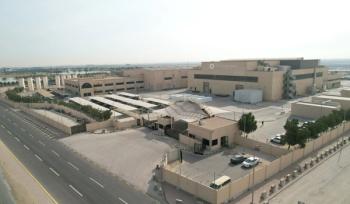
Highlights from Turbo Expo 2023: NETL Talks Federal Support for Net-Zero Emissions
Turbomachinery operators can prevent leakage at pressure stations and pneumatically operated valves along the length of the compressor by using leak- or loss-free technologies, says NETL.
As Turbo Expo 2024 in London, held June 24 – 28, nears, we’re revisiting insights from National Energy Technology Laboratory (NETL) from Turbo Expo 2023. Turbomachinery International spoke with Dr. Nate Weiland, senior fellow at NETL, at Turbo Expo 2023 in Boston about how the government supports turbomachinery operators in their journey to net zero, emphasizing reducing emissions leaks at pressure stations and beyond. Regulation supports lower-carbon hydrogen sourcing and production and has added hub programs to demonstrate carbon-capture technologies.
Q: What are some strategies that turbomachinery operators in the United States can implement to beat emissions?
Weiland: A topic of strong emphasis in the current administration is reducing natural gas emissions in infrastructure—how can you prevent leakage at pressure stations?
In the hydrogen space, Inflation Reduction Act tax incentives are based on the carbon intensity of the hydrogen produced. There are now incentives to source lower carbon-intensity natural gas that can be turned into blue hydrogen or clean hydrogen. There’s a lot of opportunity now to do waste-heat recovery on natural gas compressor stations. One of the areas we’ve been researching is adding supercritical CO2 power cycles to the back end of turbines that are driving compressors. sCO2 power cycles help to recover heat from compressor stations, and generated electricity can be used in multiple ways, such as input on the grid or powering electric-driven compressors.
Q: What trends are you seeing in carbon capture, utilization, and storage technologies in the United States?
Weiland: The technologies for
Likewise, hydrogen hubs are trying to produce low-cost, low-carbon-intensity hydrogen. This requires carbon capture on hydrogen production plants from natural gas. The Inflation Reduction Act also expanded the 45Q Tax Credit so that as you’re storing CO2 you can capture some tax benefits that greatly improve the economic viability of the plant. There is still some R&D work going on—new solvents, sorbents, and other ways of capture. Nowadays, R&D is shifting toward industries such as steel, cement, glass, and chemical manufacturing.
Newsletter
Power your knowledge with the latest in turbine technology, engineering advances, and energy solutions—subscribe to Turbomachinery International today.




